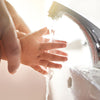Lead can be effectively removed from water using various methods, including filtration (with certified filters), distillation, and reverse osmosis. We understand the concern about lead in drinking water and the importance of finding reliable solutions. At SoftPro Water Systems, we specialize in providing high-efficiency water treatment solutions, including those designed to remove lead and other contaminants, ensuring safe and healthy water for your home.
Understanding Lead Contamination
What is Lead and How Does it Get into Water?
Lead is a chemical element and heavy metal. It is a naturally occurring element found in the earth's crust, but human activities, such as industrial processes and mining, have increased its presence in the environment. Lead can enter drinking water through corrosion of lead service lines, plumbing fixtures, and solder in older homes. This corrosion process is accelerated by acidic water, which has a low pH value (below 7). Acidic water reacts with lead, causing it to leach into the water supply. Water with higher alkalinity, meaning it has a greater ability to neutralize acids, can help create a protective layer inside pipes, reducing the amount of lead that leaches into the water.
The relationship between water hardness (the concentration of calcium and magnesium) and lead solubility is complex. Hard water can sometimes reduce lead contamination by forming a protective scale inside pipes, but this is not always reliable, and testing is still necessary to ensure safe lead levels.
The chemical reactions involved in lead corrosion often involve lead reacting with oxygen and dissolved carbon dioxide in water to form lead oxide and lead carbonate, which can dissolve into the water supply. Factors such as high water temperature and the presence of certain chemicals can further accelerate this corrosion.
Different types of pipes commonly found in homes can contribute to lead contamination. Galvanized steel pipes, often used in older homes, can contain lead in the zinc coating. Copper pipes, while generally safe, can also leach lead if the water is corrosive or if lead solder was used in plumbing joints.
CDC's Report on Health Risks of Lead Exposure
The Centers for Disease Control and Prevention (CDC) reports that lead exposure can have serious health consequences, particularly for children and pregnant women. In children, lead can cause developmental delays, learning difficulties, and behavioral problems. Pregnant women exposed to lead may experience premature birth or low birth weight. The CDC states that "no safe blood lead level in children has been identified." Lead can affect the nervous system, kidneys, and cardiovascular system. Millions of Americans are exposed to lead in their drinking water each year, highlighting the need for effective lead removal strategies.
Identifying Potential Sources of Lead in Your Home
To determine if your home has lead pipes or plumbing fixtures, you can perform a visual inspection. Lead pipes are typically dull gray and made of a soft metal that can be scratched easily with a coin. However, visual inspection alone is not always conclusive. We recommend contacting your local water utility for information on lead service lines in your area and to inquire about lead testing options.
Testing for Lead in Your Water

EPA's Recommendations for Water Testing
The Environmental Protection Agency (EPA) provides guidelines on water testing for lead. Water testing is the only way to know for sure if your water has elevated lead levels. Regular testing is crucial, especially if you have young children, are pregnant, or live in an older home with potentially outdated plumbing. Early detection of lead contamination allows you to take appropriate steps to protect your family's health.
Types of Water Tests
There are two main types of water tests for lead:
- DIY Home Test Kits: These kits are readily available at home improvement stores and online. They are relatively inexpensive and provide quick results. However, their accuracy can vary, and they may not be as sensitive as professional laboratory testing.
- Professional Laboratory Testing: Certified laboratories offer more accurate and reliable lead testing. Your local water utility or health department can often provide a list of certified labs in your area.
The EPA recommends testing your water for lead every few years, or more frequently if you have concerns about your plumbing or have young children in the home.
Interpreting Your Water Test Results
Water test results for lead are typically reported in parts per billion (ppb). The EPA has set an action level of 15 ppb for lead in drinking water. If your test results show lead levels at or above this action level, you should take steps to reduce your exposure, such as installing a water filter certified for lead removal or replacing lead service lines.
Methods for Removing Lead from Water
Filtration
Filtration is one of the most effective methods for removing lead from water. Several types of filters are available, each with its own advantages and disadvantages:
-
Activated Carbon Filters: These filters use activated carbon to adsorb lead and other contaminants. They are relatively inexpensive and effective at removing lead, chlorine, and other impurities that affect taste and odor. However, they may not remove all types of contaminants and require regular replacement. The SoftPro® Smart Home+ Water Softener & Carbon Filter is an excellent option for whole-house filtration, providing both soft water and effective lead reduction.
-
Reverse Osmosis Systems: Reverse osmosis systems use a semi-permeable membrane to remove a wide range of contaminants, including lead, bacteria, and viruses. They are highly effective at purifying water but can be more expensive than other filtration methods.
-
Distillation Systems: Distillation involves boiling water and collecting the condensed steam, leaving behind contaminants like lead. While effective, distillation can be energy-intensive and may not remove all volatile organic compounds (VOCs).
When choosing a water filter for lead removal, it is crucial to select one certified by NSF International. NSF certification ensures that the filter has been independently tested and verified to reduce lead to safe levels.
Other Solutions
In addition to filtration, other solutions for addressing lead in water include:
- Replacing Lead Service Lines: This is a long-term solution that involves replacing the lead pipes that connect your home to the main water supply. Contact your local water utility for information on lead service line replacement programs in your area.
- Using Bottled Water: Bottled water can be a temporary solution while you implement other lead removal strategies. However, it is important to choose bottled water that has been tested and certified for low lead levels.
It is important to note that boiling water does not remove lead. In fact, boiling water can actually increase the concentration of lead as the water evaporates.
Choosing the Right Water Filter

Factors to Consider
When selecting a water filter for your home, consider the following factors:
- Filter Capacity: The capacity of a filter refers to the amount of water it can treat before needing replacement. Consider your household's water usage and choose a filter with an appropriate capacity.
- Flow Rate: The flow rate determines how much water the filter can deliver per minute. A higher flow rate is generally desirable, especially for households with high water demand.
- Installation Requirements: Some filters require professional installation, while others can be easily installed by the homeowner. Consider your DIY skills and the complexity of the installation process.
- Maintenance Needs: Different filters have different maintenance requirements. Some require frequent filter replacements, while others have longer lifespans. Choose a filter that fits your lifestyle and maintenance preferences.
Recommended Water Filters
We offer a variety of high-quality water filters designed to address different needs and budgets. Here are some of our recommended products for lead removal:
- SoftPro® Smart Home+ Water Softener & Carbon Filter: This comprehensive system combines the benefits of a water softener with a whole-house carbon filter, providing both soft water and effective chlorine and lead reduction.
-
SoftPro® Reverse Osmosis System w/ Advanced Alkalizing RO Water Filter: This reverse osmosis system delivers highly purified drinking water, removing lead and other contaminants while adding beneficial minerals for improved taste and health benefits.
Maintaining Your Water Filter
Importance of Regular Maintenance
Regular maintenance is essential to ensure the optimal performance and longevity of your water filter. Replacing filters as recommended by the manufacturer prevents a decline in water quality and helps avoid potential issues like bacterial growth within the filter.
Filter Replacement and Care
Refer to your water filter's user manual for specific instructions on filter replacement. Generally, filter replacement involves shutting off the water supply to the filter, removing the old filter, installing the new filter, and flushing the system to remove any air or debris. Some filters may also require periodic cleaning or sanitization. Following the manufacturer's recommendations for filter replacement and care will help ensure the continued effectiveness of your water treatment system.
Taking Control of Your Water Quality
Protecting your family from the dangers of lead in drinking water requires proactive measures. By understanding the sources of lead contamination, testing your water, and implementing effective lead removal strategies, you can ensure access to safe and healthy water in your home. We offer a range of high-quality water treatment solutions designed to address various needs and budgets. Contact us today for a consultation and let us help you find the best solution for your home.
Safeguarding Your Home from Lead Contamination
We explored the critical issue of lead in drinking water and outlined effective strategies for lead removal. We examined the sources of lead contamination, the health risks associated with lead exposure, and the importance of water testing. We also discussed various filtration methods, including activated carbon filters and reverse osmosis systems, emphasizing the significance of choosing NSF-certified filters for guaranteed lead reduction.
Remember that lead can enter your drinking water through corroded pipes and plumbing fixtures. The EPA estimates that "approximately 15 to 22 million Americans were served by lead service lines in 2016." Protecting your family's health starts with understanding the potential risks and taking proactive steps to mitigate them.
Water testing is essential to identify the presence and levels of lead in your water. If lead is detected, implementing a reliable filtration system is crucial. Our SoftPro® Smart Home+ Water Filter System [CITY] offers a comprehensive solution for both water softening and lead removal, ensuring the safety and quality of your water supply.
Get in Touch with us today to learn more about our water treatment solutions and find the perfect system for your home.


















![Aldex Premium 10% Cross Link Resin for Water Softener [High Capacity]-SoftPro® Water Systems](http://www.softprowatersystems.com/cdn/shop/files/Aldex_10_Cross_Link_Resin_Premium_High_Capacity_for_Water_Softener_600x.jpg?v=1735853599)
















